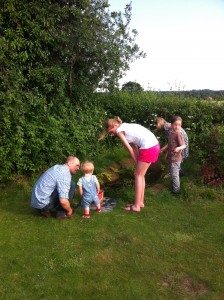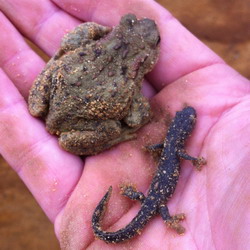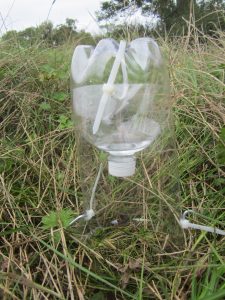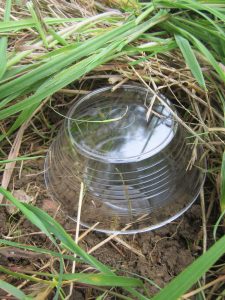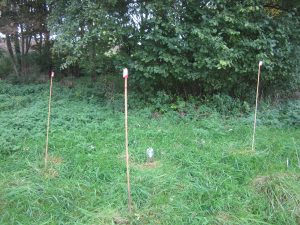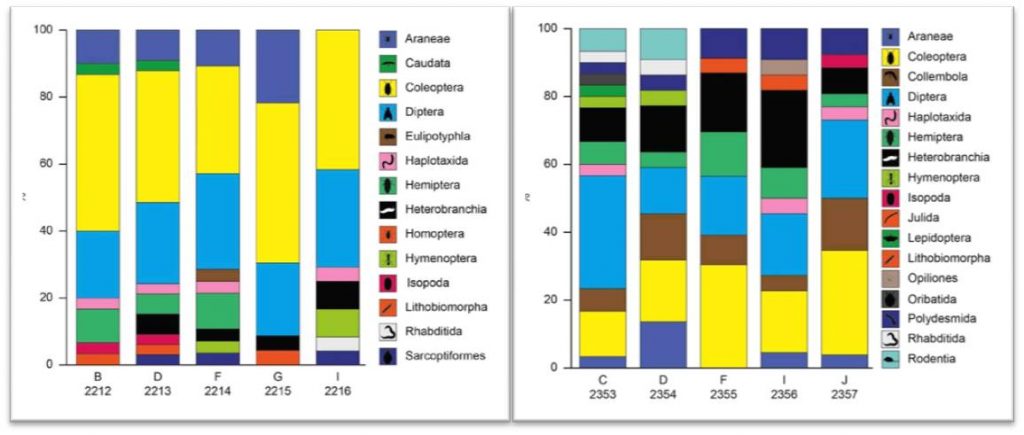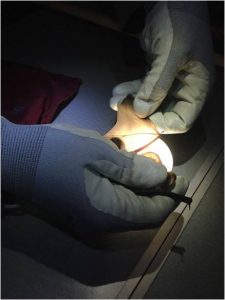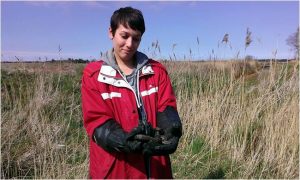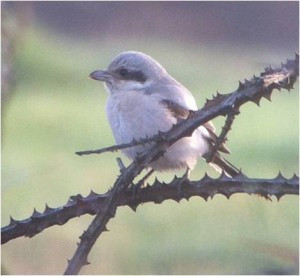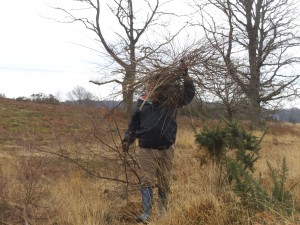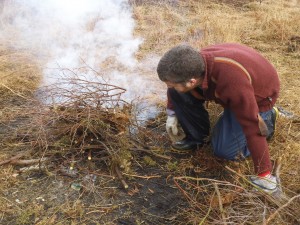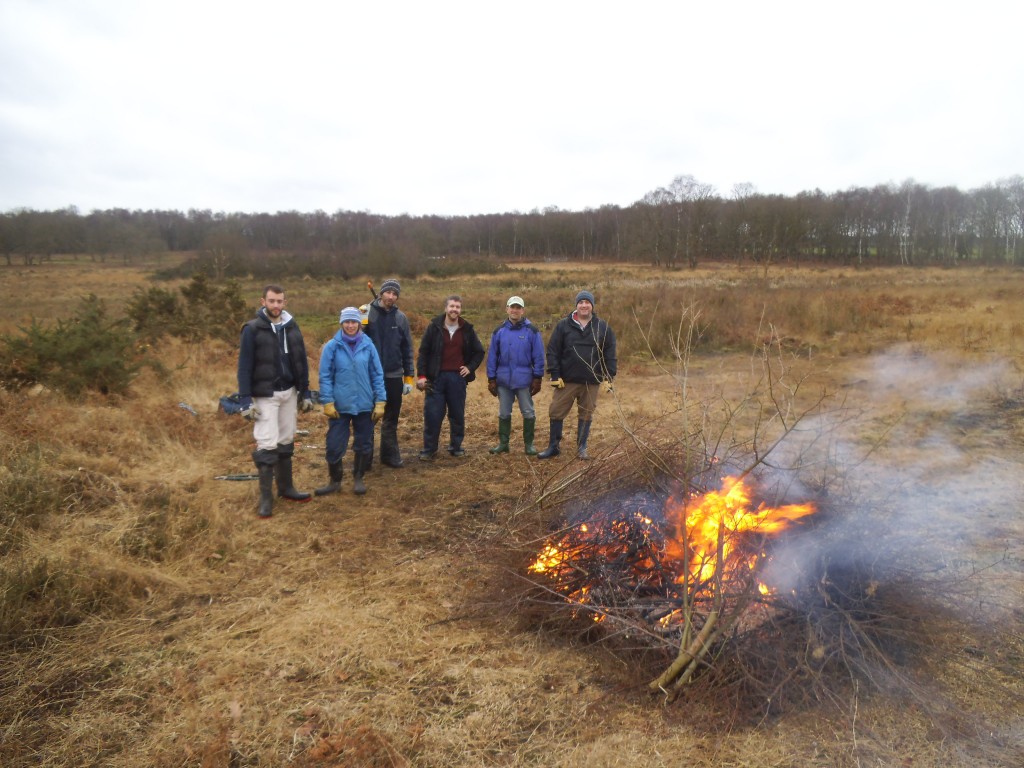Last year I made a wildlife pond in my garden, and I thought it would be interesting to share some of my experiences. I started the mini-project in late March.
My garden is not large, which affected both location and extent of the pond. Also, the garden is well used by children, so I didn’t want the new pond to be in the way of their sporting activities, nor disturbed too frequently by footballs landing in it. The pond needed to be in a sunny position, as I wanted to have abundant aquatic plants. So I chose a spot near the corner of the garden:
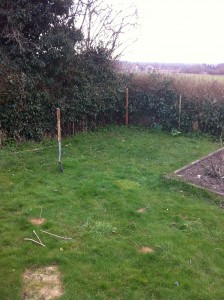
A little bit shady in the morning, but in full sun in the afternoon and evening. The area was reasonable flat, and did not interfere with our football pitch!
A lot of the guidance I used came from the excellent Freshwater Habitats Trust website www.freshwaterhabitats.org.uk. I opted for an organic shape for my pond:
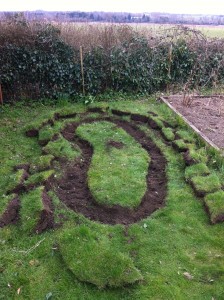
The first step was lifting the turves and placing to one side. Then I removed some soil to give a bit of depth (though not too much – a wildlife pond needs to be mainly shallow):
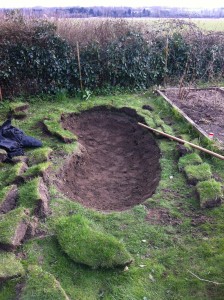
After that, I lined the pond with garden underlay and butyl liner. Even with the underlay I did still carefully check for sharp stones under the liner. After I had placed the liner over the pond, I put gravel in the pond basin:
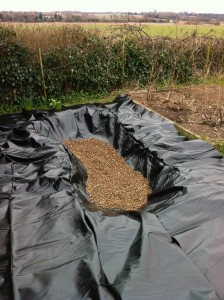
My minor mistake here was that the gravel wasn’t washed properly, so when I came to add rainwater from my water butts, the ponds water instantly turned muddy brown:
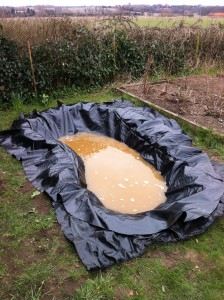
Undeterred, I trimmed the liner down to size, used the turves both over and under the liner to make the banks, and placed a paving slab for pond viewing:
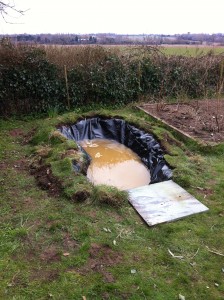
After a few days, the water started to settle and my daughter and I introduced a couple of branches so that birds could bathe and insects could perch close to the water.
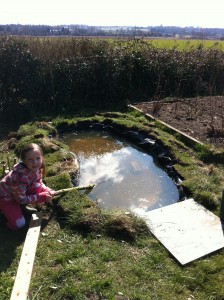
I added some plants, all of which were borrowed from friends’ ponds; these included broad –leaved pondweed, rigid hornwort, brooklime, gipsywort, water soldier, frogbit, water forget-me-not, common spike rush, lesser water parsnip and water plantain. Adding the plants instantly cleaned the water, and also accidentally introduced some invertebrate life including pond snails.
However, I wasn’t quite satisfied, because of the gap on the banks where exposed pond liner was still showing. This seemed to me to inhibit the chances of the banks being colonised by plants and used by animals, so I followed the suggestion of one of my Twitter followers, and pinned inverted grass turves around the edge of the pond:
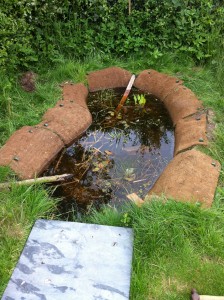
These banks colonised fairly quickly (with a bit of help from some planted creeping jenny), so by July the pond looked like this:
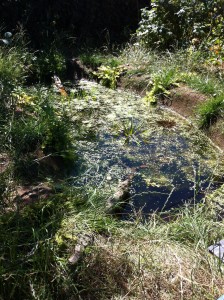
And there was abundant life – frogs and toads, smooth newts, water beetles (3spp), water boatmen, pond skaters, numerous aquatic larvae, at least 3 species of water snail, azure damselfly, ruddy darter and common darter. Flies and wasps visited the pond edges, and duckweeds grew in abundance. The only real maintenance I have done so far is to hoik out some duckweed every now and then, and to reduce the hornwort likewise – just to retain some open water areas. And the kids absolutely love it!
